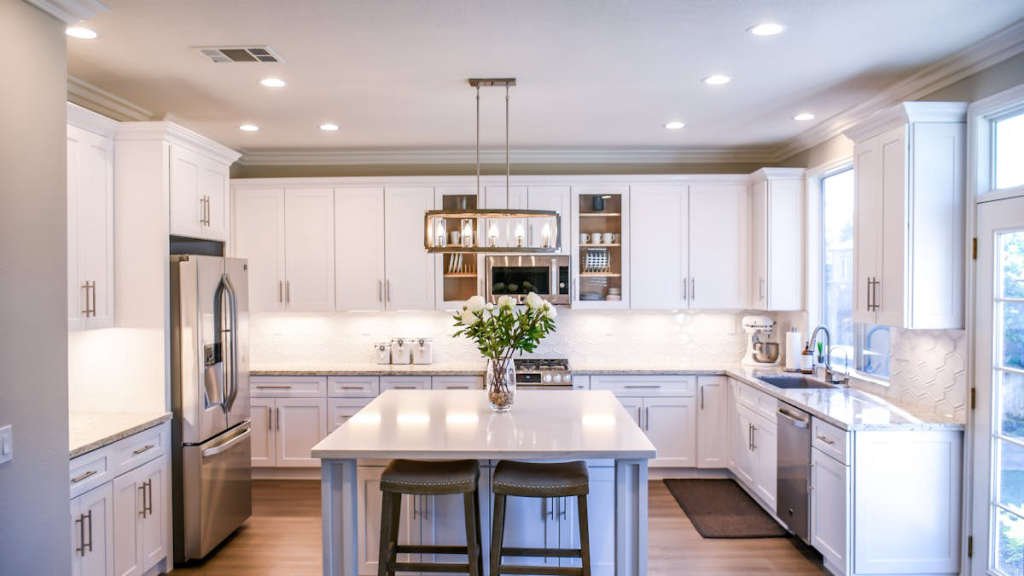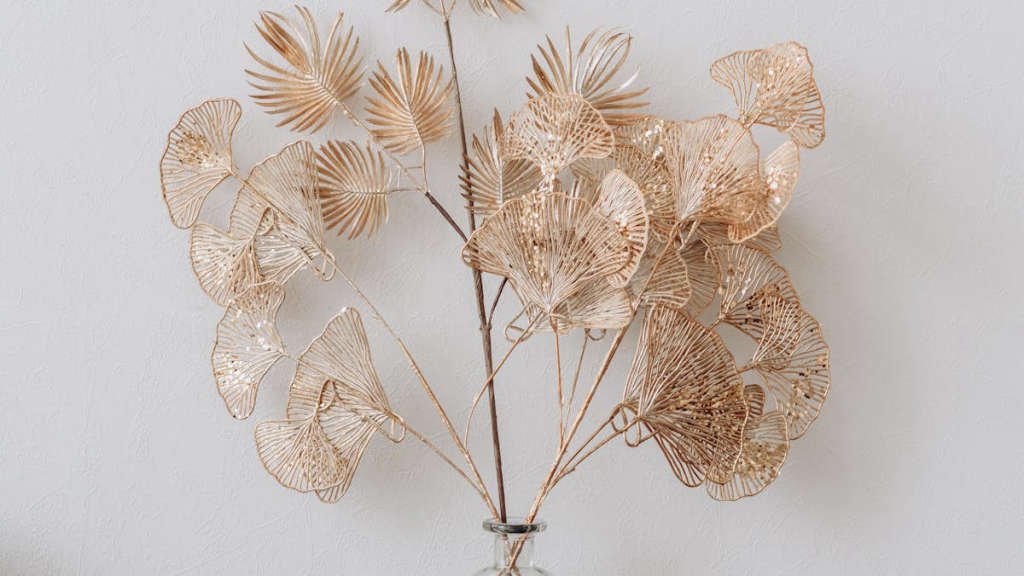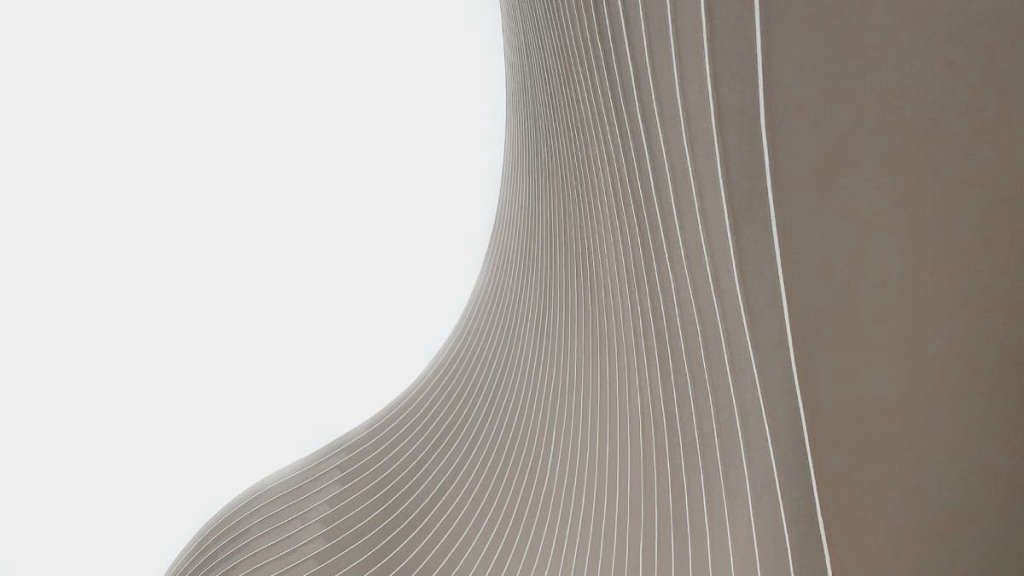
As we dive into the ever-evolving world of design, it’s crucial to stay up to date with the contemporary design trends that are shaping the industry. From eclectic styles to minimalist concepts, there is a wide array of influences that are making waves in the design world.
Main Points
- Exploring the influence of cultural diversity on contemporary design trends.
- The impact of sustainability and eco-friendly practices on design choices.
- Embracing technology and innovation in modern design aesthetics.

1. Minimalism: Embracing Simplicity in Contemporary Design
In today’s fast-paced world, where information overload is a common problem, the concept of minimalism has become increasingly popular in contemporary design. Minimalism is all about simplicity, clean lines, and clutter-free spaces, creating a sense of calm and tranquility in our surroundings.
Key Elements of Minimalist Design:
- Use of neutral colors such as white, black, and grey to create a sense of serenity.
- Functional furniture and simple decor pieces that serve a purpose.
- Open spaces with a focus on natural light and unobstructed views.
Minimalism encourages us to focus on what truly matters and eliminate distractions that clutter our lives. By embracing simplicity in design, we can create harmony and balance in our living spaces, promoting a sense of well-being and mindfulness.

2. Sustainability in Design: Eco-friendly Approaches and Materials
When it comes to design, sustainability is becoming an increasingly important factor. Designers and architects are now seeking eco-friendly approaches and materials to reduce environmental impact and promote a more sustainable future. In this article, we will explore some of the key strategies that can be implemented to create sustainable designs.
1. Use of Recycled and Reclaimed Materials
One of the most effective ways to promote sustainability in design is by using recycled and reclaimed materials. By repurposing materials that would otherwise end up in landfills, designers can reduce waste and conserve natural resources. Materials such as reclaimed wood, recycled glass, and repurposed metal can add character and uniqueness to a design while also reducing its environmental footprint.
2. Integration of Energy-efficient Systems
Another important aspect of sustainable design is the integration of energy-efficient systems. This can include the use of solar panels, geothermal heating and cooling, and energy-efficient appliances. By reducing energy consumption, designers can lower carbon emissions and create buildings that are more environmentally friendly. Additionally, energy-efficient systems can also lead to cost savings for building owners in the long run.
3. Incorporation of Biophilic Design Principles
Biophilic design is a concept that seeks to connect people with nature through the built environment. By incorporating elements such as natural light, greenery, and natural materials into design projects, designers can create spaces that promote health and well-being. Biophilic design can also help reduce stress, increase productivity, and enhance overall quality of life for building occupants.
| Benefits of Sustainable Design | Examples of Sustainable Materials |
|---|---|
| Reduces environmental impact | Reclaimed wood |
| Promotes energy efficiency | Recycled glass |
| Enhances occupant health and well-being | Repurposed metal |
Overall, sustainability in design is an essential consideration for creating a more environmentally responsible and socially conscious built environment. By incorporating eco-friendly approaches and materials, designers can contribute to a more sustainable future for the planet and its inhabitants.

3. Innovative Use of Technology in Modern Design Concepts
Technology has played a crucial role in shaping modern design concepts and pushing the boundaries of creativity. In today’s digital age, designers are constantly looking for innovative ways to incorporate the latest technological advancements into their work. From virtual reality and artificial intelligence to 3D printing and interactive installations, the possibilities are endless.
Virtual Reality
One of the most exciting advancements in modern design is the use of virtual reality (VR) to create immersive experiences for users. VR technology allows designers to transport viewers into a different world, where they can interact with their environment in new and exciting ways. This has revolutionized the way we experience and interact with design, opening up a whole new realm of possibilities.
Artificial Intelligence
Artificial intelligence (AI) has also had a significant impact on modern design concepts. Designers are now able to use AI algorithms to analyze data, generate new ideas, and even create designs autonomously. This has streamlined the design process and expanded the creative potential of designers, leading to truly groundbreaking results.
3D Printing
3D printing technology has transformed the way designers prototype and manufacture their creations. With 3D printing, designers can quickly and cost-effectively produce physical prototypes of their designs, allowing for faster iterations and more experimentation. This has enabled designers to push the boundaries of what is possible in design, creating intricate and complex structures that would have been impossible to achieve using traditional manufacturing methods.
In conclusion, the innovative use of technology in modern design concepts has revolutionized the way we think about design and creativity. By harnessing the power of technology, designers are able to push the boundaries of what is possible, creating truly groundbreaking and inspiring work.
4. Multifunctional Furniture: Space-saving Solutions for Modern Living
In today’s fast-paced world, where space is at a premium, multifunctional furniture has become a popular choice for those looking to maximize the use of their living space. With innovative designs and clever functionalities, multifunctional furniture offers practical solutions for modern living. Here are some key benefits of incorporating multifunctional furniture into your home:
1. Space-saving:
One of the main advantages of multifunctional furniture is its ability to save space. By combining multiple functions into a single piece of furniture, you can maximize the use of your living area without compromising on style or comfort. Whether it’s a sofa that transforms into a bed or a coffee table with hidden storage compartments, multifunctional furniture helps you make the most of every inch of space in your home.
2. Versatility:
Multifunctional furniture is incredibly versatile, offering a range of functions to suit your lifestyle. From fold-out desks to extendable dining tables, these pieces can adapt to your changing needs and preferences. Whether you’re working from home, hosting a dinner party, or simply relaxing with a good book, multifunctional furniture provides the flexibility to easily switch between different activities and purposes.
3. Stylish Design:
Despite their practicality, multifunctional furniture pieces are also designed to be aesthetically pleasing. With sleek lines, modern finishes, and thoughtful details, these pieces can enhance the overall look and feel of your living space. From minimalist Scandinavian designs to bold, statement-making pieces, multifunctional furniture offers a wide range of styles to complement your home decor.
4. Cost-effective:
Investing in multifunctional furniture can be a cost-effective solution for furnishing your home. Instead of purchasing multiple pieces of furniture for different functions, you can save money by investing in versatile, multifunctional pieces that serve multiple purposes. This not only helps you save on furniture costs but also reduces clutter and simplifies your living space.
5. Eco-friendly:
Many multifunctional furniture pieces are designed with sustainable materials and eco-friendly practices in mind. By choosing multifunctional furniture made from recycled materials or renewable resources, you can reduce your environmental footprint and contribute to a more sustainable lifestyle. With increasing awareness of the importance of environmental conservation, investing in eco-friendly multifunctional furniture is a smart choice for modern living.
Overall, multifunctional furniture offers a smart, stylish, and sustainable solution for maximizing your living space in today’s modern world. By incorporating multifunctional pieces into your home, you can create a functional and versatile living environment that meets your changing needs and enhances your quality of life.
5. Bold Colors and Patterns: Making a Statement in Contemporary Design
When it comes to contemporary design, bold colors and patterns are making a significant impact. Gone are the days of neutral tones and minimalistic designs. Today, designers are incorporating vibrant hues and eye-catching patterns to make a statement.
One key element of this trend is the use of bold colors. From rich jewel tones to bright neons, these shades are being used in unexpected ways to create a sense of drama and excitement. Whether it’s a pop of color in a neutral space or an entire room drenched in bold hues, the impact is undeniable.
Alongside bold colors, designers are also embracing patterns in a big way. Geometric prints, floral motifs, and abstract designs are all being used to add depth and interest to spaces. Whether it’s a statement wallpaper, a bold area rug, or a patterned accent piece, these designs are adding a sense of energy and personality to contemporary interiors.
The key to successfully incorporating bold colors and patterns into your design is balance. Too much can be overwhelming, but the right amount can create a striking and memorable space. So don’t be afraid to experiment and push the boundaries – after all, design is all about making a statement.
6. Biophilic Design: Incorporating Nature into Modern Interiors
In recent years, the trend of biophilic design has gained popularity in the field of interior design. Biophilic design focuses on creating spaces that incorporate elements of nature to enhance overall well-being and productivity.
One of the key principles of biophilic design is to bring the outdoors inside. This can be achieved through the use of natural materials such as wood, stone, and plants. By incorporating these elements into modern interiors, designers can create a sense of connection with nature, which has been shown to have numerous benefits for both physical and mental health.
The Benefits of Biophilic Design
Research has shown that incorporating elements of nature into interior spaces can have a number of positive effects on occupants. Studies have found that exposure to natural light, plants, and views of nature can help reduce stress, improve cognitive function, and increase creativity.
“Nature is not only nice to have around us, but it’s a necessity for our well-being.” – Richard Louv
How to Incorporate Biophilic Design into Your Home
There are many ways to incorporate biophilic design into your home. Consider adding a living wall of plants, incorporating natural materials such as wood and stone, and maximizing natural light through large windows. By bringing elements of nature into your living space, you can create a calming and rejuvenating environment.
| Benefits of Biophilic Design | How to Incorporate Biophilic Design |
|---|---|
| Reduced stress | Living wall of plants |
| Improved cognitive function | Natural materials like wood and stone |
| Increased creativity | Maximizing natural light |
7. Cultural Influences in Contemporary Design: Global Inspiration in the Industry
In today’s rapidly evolving design landscape, cultural influences play a significant role in shaping the industry. Designers draw inspiration from diverse cultures around the world, incorporating unique elements into their work to create innovative and impactful designs.
Cultural diversity has become a driving force in contemporary design, leading to a more inclusive and globalized approach to creativity. By embracing different traditions, beliefs, and aesthetics, designers can create a more nuanced and rich design language that resonates with a wider audience.
Global Inspiration in Design:
- Traditional craftsmanship: Many designers are turning to traditional craftsmanship techniques from various cultures as a source of inspiration. This not only honors the heritage and history of different communities but also adds a unique, handmade element to contemporary design.
- Color palettes: Different cultures have distinct color palettes that reflect their traditions and values. Designers often incorporate these colors into their work to evoke specific emotions or convey cultural significance.
- Symbolism: Symbols and motifs from different cultures can add depth and meaning to design projects. By carefully selecting and incorporating these symbols, designers can create work that resonates on a deeper level with viewers.
Overall, cultural influences in contemporary design bring a richness and diversity that enriches the industry. By embracing and celebrating the different traditions and aesthetics from around the world, designers can create work that is not only visually stunning but also socially and culturally relevant.
Conclusion
In conclusion, the concept of ‘undefined’ in contemporary design trends challenges traditional boundaries and allows for greater freedom of expression and experimentation. As designers continue to push the limits of what is considered conventional, we can expect to see more innovative and boundary-pushing designs that break the mold and redefine the possibilities of contemporary design.
Frequently Asked Questions
What are the current contemporary design trends?
Some current contemporary design trends include minimalism, bold typography, immersive colors, sustainability, and geometric shapes.
How can I incorporate contemporary design trends into my project?
You can incorporate contemporary design trends by focusing on clean lines, using modern fonts, choosing a sophisticated color palette, integrating eco-friendly elements, and experimenting with geometric patterns.
Why is contemporary design important in today’s world?
Contemporary design helps create visually appealing and functional solutions that resonate with modern audiences. It reflects current lifestyles, technological advancements, and cultural influences.
What makes a design truly contemporary?
A design can be considered truly contemporary when it embraces innovation, simplicity, sustainability, and user-centric approaches. It should feel fresh, relevant, and forward-thinking.
How can I stay updated on the latest contemporary design trends?
You can stay updated on the latest contemporary design trends by following design blogs, attending industry events and workshops, exploring design publications, and engaging with other professionals in the field.
